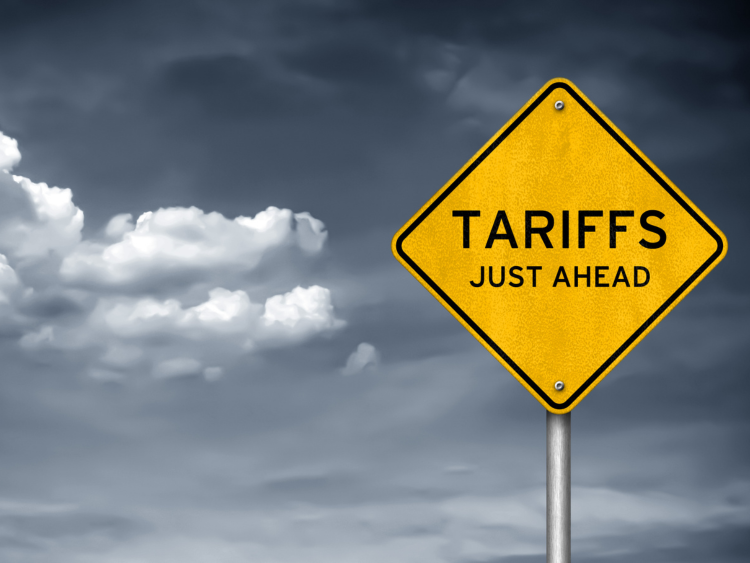Government/Policy

June 29, 2024
Leibowitz: So Long, Chevron
Written by Lewis Leibowitz
At the end of every Supreme Court term there are a few big cases. This year, there are more. The last day for releasing opinions comes July 1.
On Friday, the Court issued a long-awaited and long-expected decision about interpreting statutes that give powers to administrative agencies, including (among many others) the Commerce Department, the International Trade Commission, the US Trade Representative and the EPA.
Background
In Loper Bright Enterprises, the Supreme Court disavowed (in law speak “overruled”) a doctrine it created in 1984, in another end-of-term decision. Chevron required federal courts to defer to federal agencies in cases where statutes giving legal authority to that agency were “ambiguous”. This was a departure from normal legal interpretation, where courts were considered the final interpreters of the law.
Chevron justified this departure to acknowledge that agencies were supposedly better able than judges to discern what Congress wanted to have the agency do in cases where the law was unclear. It sounded good, but in the end it did not work. Hence the disavowal of the decision on Friday.
There was, as is normal in cases pitting the “administrative state” against conservative hostility to it, a vigorous dissent. Three Justices desperately wanted Chevron to live and validate administrative expertise over the private sector complaining about erosion of their rights. These are not easy issues, and each case has its own detractors and supporters of each administrative decision.
What does this mean for the practice of administrative law and decision-making? The Supreme Court has reasserted its supremacy to “say what the law is,” to quote Chief Justice Marshall in Marbury v. Madison (1803), perhaps the most famous decision in US history.
During the 40-year reign of Chevron, Congress passed countless statutes granting authority to administrative agencies to make decisions on countless issues. No statute can foresee every possible situation and dictate how it should be resolved, so many statutes contain ambiguities. The question is: which branch, executive or judicial, definitively decides what the statute means? While the Supreme Court did not invoke Chevron to decide any case for nearly ten years, lower federal courts used it to defer to agency decisions thousands of times.
A whole new chapter
That stops now. Courts have not only the authority but the obligation to interpret statutes and to substitute their judgment for that of the agency if there is disagreement.
Since 1984, Congress has punted difficult questions to administrative agencies, knowing that those agencies could interpret unclear provisions and that, so long as those decisions were “reasonable” (an ambiguous term itself), the courts would not undo them. Now, legal issues before an agency will be heard by a court with the power to reverse the agency’s decision because the court simply disagrees on what is the right answer. This will upend a lot of administrative decision-making.
Instead of developing arguments that a decision is “reasonable,” agency lawyers (and their assigned litigators at the Justice Department) will need to develop arguments that the decision was right and will need to convince a court that does not know the policy issues as well as the agency. Agencies will need persuade.
Another problem with Chevron is that agency lawyers had the upper hand. Typically, an agency would be sued by private interests, appearing before a neutral judge with competing legal arguments. But the agency would have the upper hand in that contest because the agency could successfully defend its choice by claiming that it is one of several “reasonable” choices. Now, the judge must determine which of those “reasonable” choices is the right one.
What does this mean for trade?
It is hard to know how many cases this will change. In international trade cases, the relevant statutes have plenty of ambiguities, but now that issue will nearly vanish. Instead, courts will be called upon to arrive at an answer using standard methods of statutory interpretation, which are numerous and often imprecise in themselves. One judge may disagree with another on the proper interpretation of statutory language. Then, a court of appeals (or the Supreme Court) will have to resolve the issue. In trade cases, there is only one Court of Appeals (the Federal Circuit) so most conflicts will be settled at that level.
These decisions are always contentious because judges (including Supreme Court Justices) weigh different considerations differently. The majority in Loper Bright Enterprises overruled Chevron because the uncertainty of administrative decisions (that can change from one administration to the next) was more disruptive than the uncertainty of conflicting judicial decisions, which can be resolved by a higher court.
In the trade and environmental area, the newfound authority of judges to “say what the law is” could bring a mountain of litigation seeking alternative decisions.
The possibility of more liberal or conservative judges being appointed will in turn depend on who wins the White House and the Senate in November.
Congress will have new power and responsibility to craft legislation that is clearer, and must have the will to change legislation in the aftermath of a court decision that disrupts the functioning of an administrative program.
This dynamic will apply to trade, environment, labor, securities, government contracts and countless other areas.
In Washington, change always makes new work for lawyers.
Editor’s note: This is an opinion column. The views in this article are those of an experienced trade attorney on issues of relevance to the current steel market. They do not necessarily reflect those of SMU. We welcome you to share your thoughts as well at info@steelmarketupdate.com.






